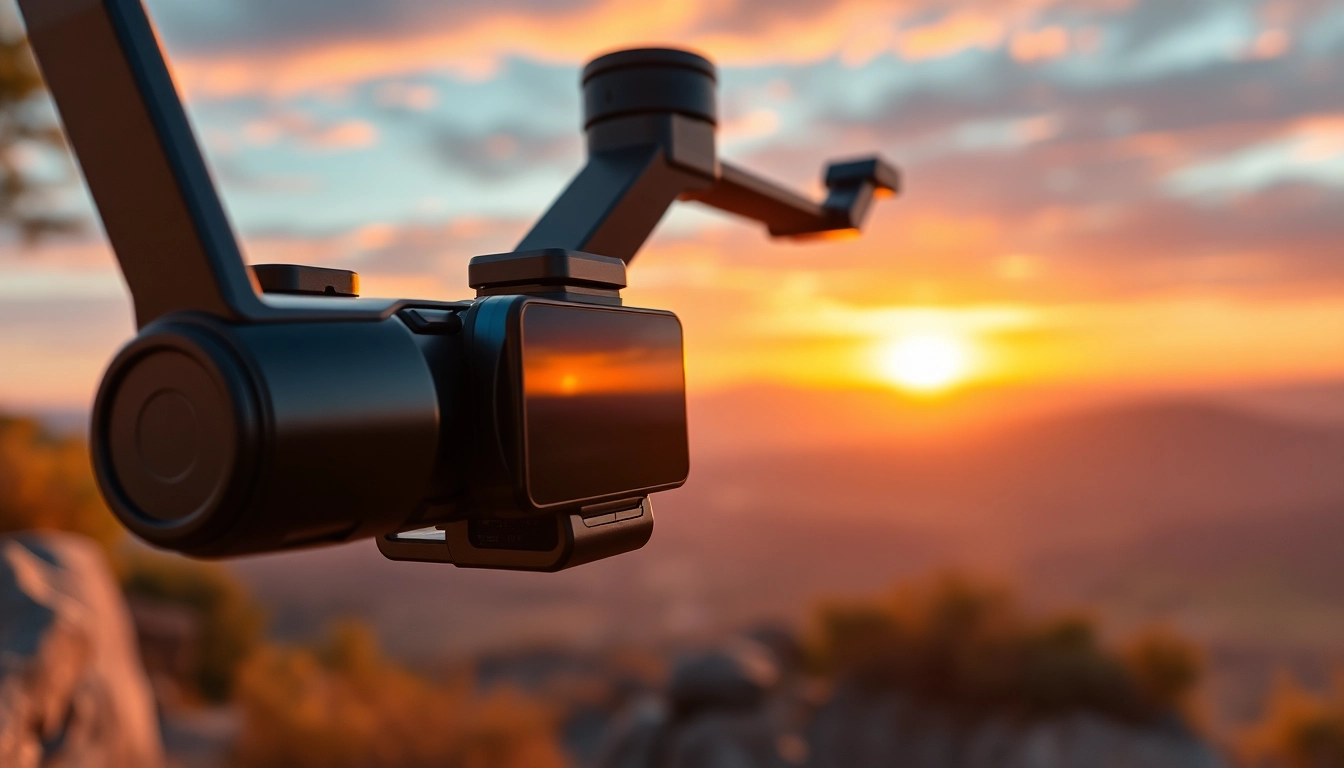Understanding the Basics of Gimbal Technology
What is a Gimbal?
A gimbal is a sophisticated device designed to allow an object to rotate around an axis with minimal interference, providing unparalleled stability and motion control. The fundamental concept of a gimbal involves a set of pivoted supports that are stacked orthogonally, enabling rotation along multiple axes. This design is commonly utilized in video and photography, where smooth and stable footage is paramount.
How Gimbals Work: An Inside Look
At its core, a gimbal operates using a system of motors and sensors. When a user moves the camera or smartphone attached to the gimbal, sensors detect the motion. Advanced algorithms then adjust the position of the camera in real-time to counteract unwanted movements. This process involves both mechanical and electronic components working in tandem, ensuring that the final output remains steady even in dynamic environments.
Types of Gimbals: Finding the Right Fit
There are several types of gimbals available in the market, each designed to meet specific needs:
- Handheld Gimbals: These are portable devices that allow users to stabilize their cameras while moving. Ideal for vloggers and travel enthusiasts.
- Camera Gimbals: Designed for larger cameras and professional setups, these gimbals provide enhanced stabilization for serious filmmakers.
- Drone Gimbals: Specifically made for drones, these gimbals stabilize footage from aerial shots, ensuring smooth and fluid motion.
- Smartphone Gimbals: These are compact, lightweight gimbals that accommodate smartphones, perfect for casual users and micro-content creators. Discover the latest in smartphone gimbals at gimbal options.
Benefits of Using a Gimbal for Video Creation
Enhancing Video Quality with Gimbal Stabilization
Video quality is a critical aspect for any content creator, and stabilization plays a vital role. Gimbals reduce unwanted shakes and jitters that arise from handheld shooting. The result is smooth, cinematic footage that is visually appealing. High-quality, stable videos not only engage the audience better but also enhance the creator’s professional image.
Improving User Experience in Filmmaking
Using a gimbal can dramatically improve the user experience during filming. With the added stability, creators can focus on their storytelling without the distraction of shaky footage. This ease of use ensures that filmmakers can concentrate on capturing the desired shots, leading to more creative and effective storytelling.
From Vlogging to Professional Shooting: Versatile Uses of Gimbal
Gimbals are not limited to professional filmmakers; they serve a variety of purposes across different platforms:
- Vlogging: Content creators utilize gimbals to enhance their video quality, making daily vlogs seem more polished and engaging.
- Event Coverage: Gimbals are vital for capturing live events, allowing videographers to move freely while maintaining stability.
- Aerial Filming: When paired with drones, gimbals provide breathtaking aerial shots without the typical turbulence associated with drone movements.
- Real Estate Videos: Real estate agents use gimbals to capture smooth walkthroughs of properties, creating a more immersive viewer experience.
Choosing the Right Gimbal for Your Needs
Key Features to Look for in a Gimbal
When selecting a gimbal, several key features should be considered to ensure it meets your specific needs:
- Axis Configuration: Typically, gimbals come in 2-axis or 3-axis configurations. A 3-axis gimbal offers the most stability by compensating movements along three planes.
- Payload Capacity: Ensure that the gimbal can support the weight of your camera or smartphone. Overloading a gimbal can impair its stabilization capabilities.
- Battery Life: Look for gimbals with long battery life, so you won’t run out of power during crucial filming sessions.
- Ease of Use: Intuitive controls and quick setup features can significantly enhance the user experience, especially for beginners.
Budget Considerations: Finding Affordable Options
Gimbals are available across a broad price spectrum, accommodating different budgets. While high-end models offer advanced features and superior build quality, there are also many budget-friendly options that maintain excellent stabilization capabilities. Consider what features you truly need against your budget to find the best gimbal that fits your requirements.
Compatibility with Cameras and Smartphones
Before purchasing a gimbal, ensure it is compatible with your camera or smartphone. Many gimbals are designed specifically for certain models or brands, so checking compatibility is crucial. This will enable optimal performance and stabilization, allowing you to make the most out of your shooting experience.
Using a Gimbal Effectively: Tips and Tricks
Setup and Calibration for Optimal Performance
Proper setup and calibration are fundamental to achieving the best results from your gimbal:
- Balancing: Ensure that your camera is well-balanced on the gimbal before turning it on. This reduces motor strain and improves stabilization.
- Calibration: Most gimbals come with calibration features to fine-tune settings. Utilizing these can vastly improve performance.
- Firmware Updates: Regularly check for firmware updates that may enhance functionality and stability of your gimbal.
Advanced Techniques for Smooth Footage
Once you’re familiar with the basics, try incorporating some advanced techniques to elevate your footage:
- Dynamic Pans: Slow, smooth pan movements can create a dramatic effect when capturing landscapes or action shots.
- Walking Shots: Practice different walking techniques by slightly bending your knees and maintaining a steady motion to avoid bounciness.
- Focus on Composition: Use the gimbal to create compelling compositions by adjusting angles without sacrificing stability.
Common Mistakes and How to Avoid Them
Even experienced users can make mistakes that hinder the effectiveness of a gimbal. Some common errors include:
- Incorrect Balancing: Failing to properly balance your camera can lead to poor stabilization. Always double-check balance before filming.
- Neglecting Maintenance: Regularly clean and maintain your gimbal to prolong its lifespan and ensure optimal performance.
- Ignoring Settings: Familiarize yourself with the settings of your gimbal and adjust them based on the shooting conditions.
Future of Gimbals: Innovations and Trends
Emerging Technologies in Gimbal Design
As technology advances, gimbal designs continue to evolve. Features like improved motor technology, weight reduction materials, and enhanced battery efficiency contribute to better user experiences. Additionally, emerging trends in materials science, including carbon fiber and lightweight all-weather components, are making gimbals even more portable and durable.
The Role of AI in Gimbal Functionality
Artificial intelligence is becoming an integral part of gimbal technology, offering features such as automatic object tracking and intelligent scene recognition. These advancements enable gimbals to adjust automatically, enhancing the user experience by simplifying the filming process for both professionals and amateurs alike.
Predicted Market Trends for Gimbal Enthusiasts
The gimbal market is expected to grow rapidly with the increase in video content creation. As more people engage in vlogging, live streaming, and drone filming, the demand for stable and high-quality footage will fuel innovation and competition among manufacturers. Coupled with the rise in AI assistance and smart features, the future of gimbals looks promising for creators across various platforms.



